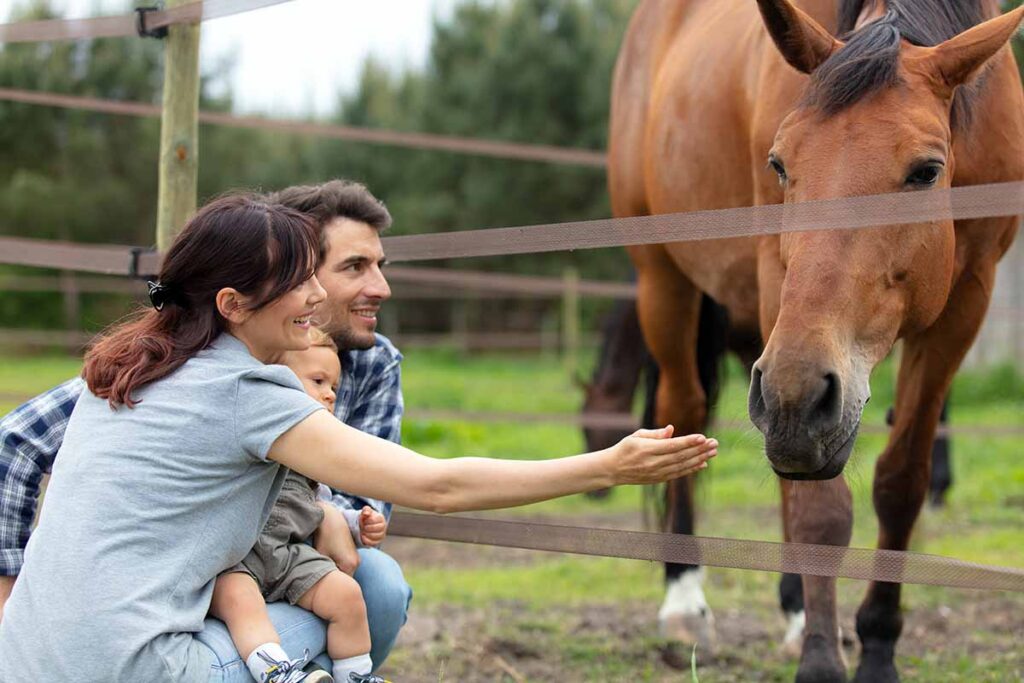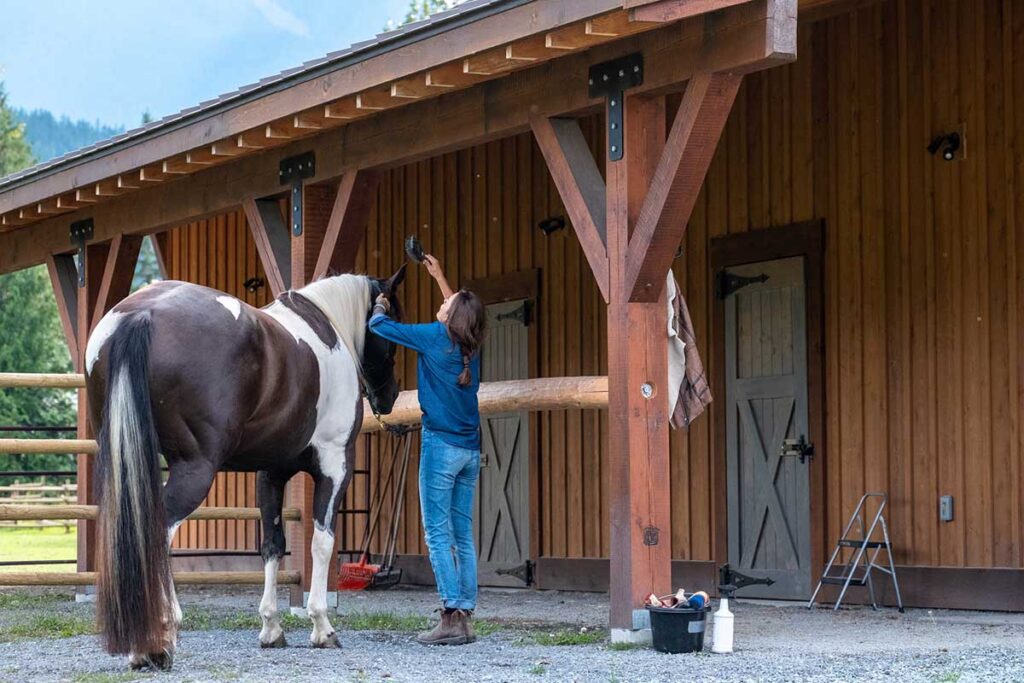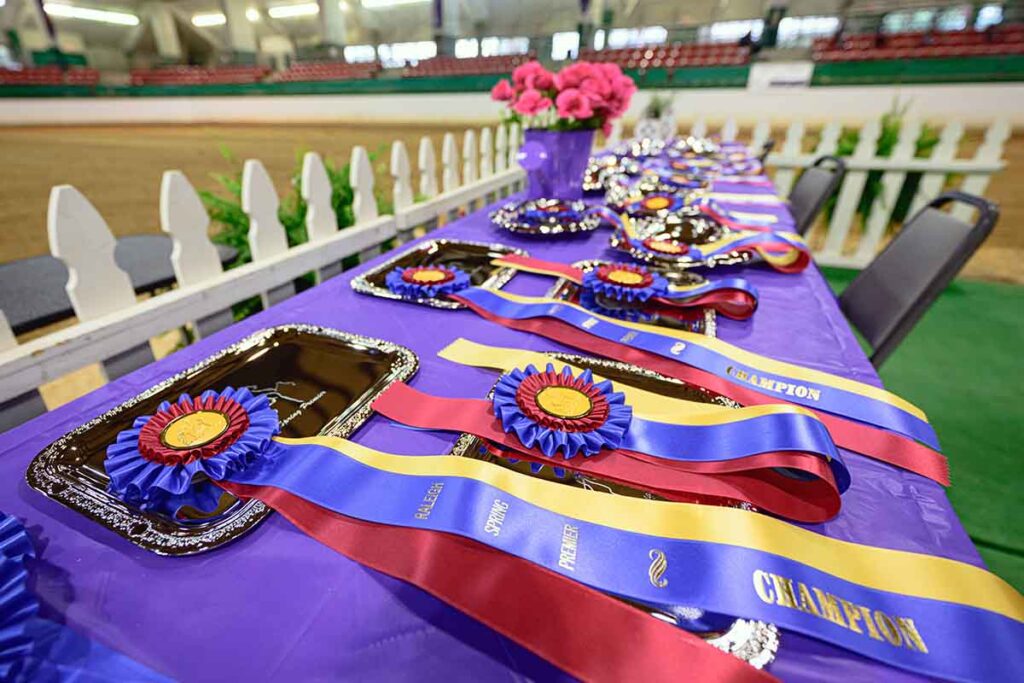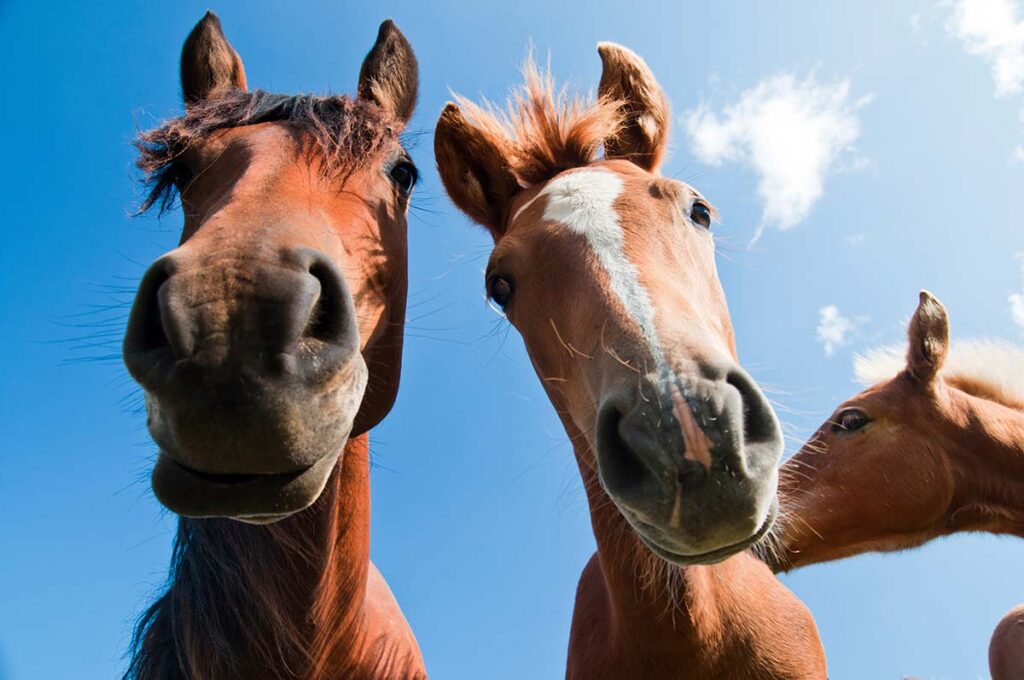Buying horse hay seems like a simple enough task, until the farmer begins using words you can’t understand. To shop smart, anyone with horses needs a working vocabulary of horse hay terms. Get a start on your horse hay education with these key descriptors, courtesy of Lester Vough, PhD, associate professor emeritus with the University of Maryland’s College of Agriculture and Natural Resources.
6 Key Hay Terms You Should Know
Grass hay is made from any group of plants with long, narrow, curled leaves parallel to jointed stems and seed-like fruit on “heads.” Orchardgrass, Bermuda grass, oats and timothy are examples of grass hay.
Legume hay essentially includes clovers and alfalfa, which convert nitrogen from the air to nitrates in the soil. They have broader, smaller leaves that grow at angles to the stems and clusters of flowers, rather than seeds.
The cutting refers to the numerical order of the harvests each year. For example, the first cutting occurs in May and early June in the northern states (slightly earlier as you move south); second-cutting hay typically is harvested four to six weeks later; third-cutting is from the third harvest, etc. Three to five cuttings are made per year in most of the United States, although farmers in the South and Southwest sometimes can eke out more. The quality of each cutting depends primarily on the stage of maturity of the crop at harvesting. The first cutting is often harvested late due to May’s inclement hay-making conditions, and it often contains more weeds than later cuttings. Therefore, quality can be lower than that of subsequent harvests. With western irrigated hay, however, the first winter-grown cutting is valued because it is finer and less lush than the second or third cuttings.
Early-cut hay is harvested at an early or immature stage of growth — just as flowers are emerging on alfalfa and as heads are developing on grasses. Early-cut hay is relatively fine-stemmed and leafy, lowers in fiber, higher in protein and energy, more palatable and consumed in larger quantities by animals than is later-cut hay. Feeding early-cut hay greatly reduces the amount of grain a horse needs.
Conversely, late-cut hay is harvested at an advanced stage of growth, when alfalfa flowers are in full bloom or grasses have developed full heads or seeds. Late-cut hay is course and stemmy, high in fiber and low in protein.
Curing is the process of drying the forage after harvest so that it can be preserved (baled) for later feeding. Hay is out in windrows in the field for drying and curing.
Take-Home Message
Whether your hay is grass or legume, second- or third-cutting, understanding forage terminology is the first step toward becoming a savvy hay buyer. Take the time to educate yourself, ask your hay supplier questions, and ensure you’re feeding your horse a quality hay.
This article originally ran on EQUUSMagazine.com.








